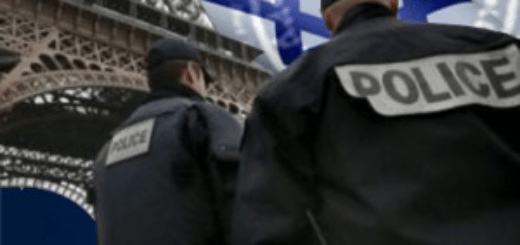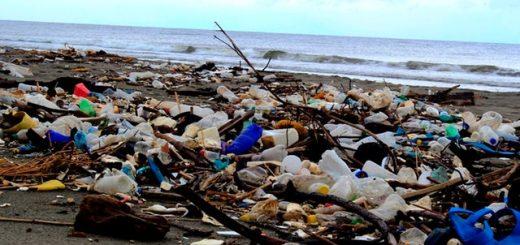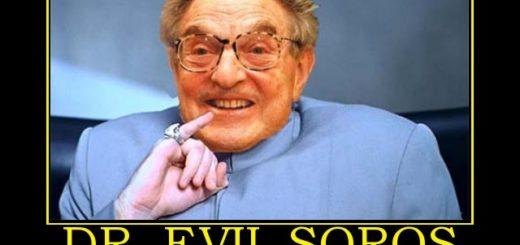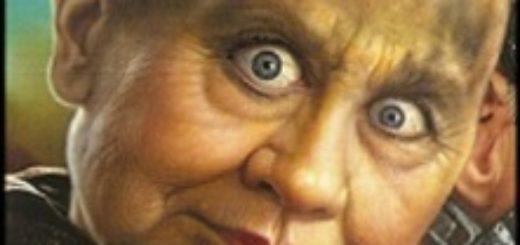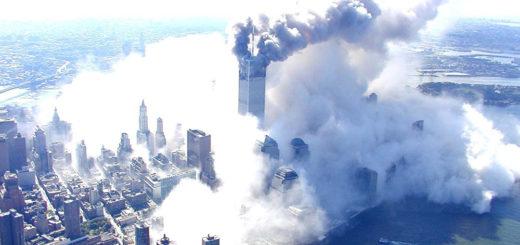CONGRESS MADE IT LEGAL FOR BANKS TO STEAL YOUR MONEY
From Bailouts to Bail-Ins: Understanding the Dodd-Frank Act
Home » July 2015 » From Bailouts to Bail-Ins: Understanding the Dodd-Frank Act
by L. Carlos Lara
On the surface, the Dodd-Frank Wall Street Reform and Consumer Act 1 (January 21, 2010)—the most sweeping overhaul of the financial markets since the Great Depression— was created to provide increased preventive regulation in order to strengthen the financial markets in case of another 2008-type crisis. This new law specifically involves increased capital thresholds for financial institutions mirroring the cross-border framework and requirements of the Basel III International Reforms 2 that were formulated for the banking system of the European Union by the Bank for International Settlements. (See: The Lara-Murphy Report (LMR), May 2014 edition. “Bank Deposits Are Risky—Now More than Ever.”)
In addition to these requirements, the law also provides for an expedient liquidation process for any insolvent financial institution, including the regulatory tools to implement the liquidation. This process referred to as “Statutory Bail-Ins” includes expanded powers to the Federal Reserve, the Securities and Exchange Commission (SEC) and the Federal Deposit Insurance Corporation (FDIC), whereby bank holding companies and significant non-bank holding companies can be placed in receivership under federal control with the FDIC acting as receiver under Title II of the Act.3
More importantly and because investors are an essential ingredient of capital markets, the Dodd-Frank Act is aimed specifically to increase Wall Street transparency and investor protection as a means of bolstering investor confidence to draw them back into the investing arena.
NO MORE BAILOUTS
Above all, the most affirming stance this new law makes is that “too-big-to-fail” financial institutions will not be bailed-out by taxpayer dollars this next time around. In and of itself this one caveat alone smacks of prudence on the part of our governing officials. After all it’s no secret that the bailouts created one the worst economic hazards for the helpless American taxpayer compared to any other financial reform to date; in no way was a financial dilemma rectified. Therefore, protecting taxpayer money became the principal priority of the new U.S. reform. What is incredibly ironic is that since this colossal law was enacted, the Federal Reserve and in fact, all world central bankers, have never been so brazen in their stimulus programs. The near-zero interest rates across all boarders continue to prod the sophisticated institutional investor, global market trader, and international investment banker to proceed with business as usual, employing high-risk investments and careless credit expansion similar to the period prior to 2008. Meanwhile the world debt bubble continues growing at an accelerated pace.
According to a recent financial report put out by McKinsey & Company (February 2015)4, global debt since 2007 has grown by $57 trillion raising the ratio of global debt to GDP by 17 percentage points. They estimate that as of the second quarter of 2014, the global debt to GDP ratio stood at 286%, compared to 269% back in the fourth quarter of 2007. The main thrust of the report is that the world as a whole has not “deleveraged” since the financial crisis of 2008, even though we all supposedly saw just how dangerous that leverage was.
In particular, household debt worldwide has exploded with debt-to-income ratios exceeding peak levels and 74% of household debt being directly tied to mortgages. The similarities, then to present circumstances are eerie. One is left to conclude that perhaps this one caveat in the new banking system rules—no more bailouts— has somehow created a false sense of security that our banking and government officials have their hands firmly on the steering wheel and we have no need to worry. Yet short of sheer madness what else can explain these unprecedented numbers in light of diminishing expectations of future economic growth?
The masses of society still remain uninformed regarding the particulars of the Dodd-Frank Act even five years since its enactment. But financial experts and economists who understand the details of this law are beginning to voice their doubts as to whether all this excessive regulation is warranted, or even if it can actually be enforced without creating an even more detrimental hazard to the entire economy at the time of the new crisis. At this point the only example we have of how a statutory bail-in would actually work are the results of the insolvencies of the two largest commercial banks in Cyprus, which occurred in March of 2013. In the end only one bank was actually shuttered and minimal taxpayer money was required. Consequently, government and banking officials were quite satisfied with the results of the bail-in process except that the stockholders, bank depositors, and the Cyprus economy did not fare all too well. (The larger stockholders of the bank exited before knowledge of the insolvency became public.) The latest news from Cyprus reported in a Wall Street Journal article 5 late last year is that the existing shareholders were almost completely wiped out and 21,000 bank clients who had deposits of more than 100,000 euros saw 47.5% of their unsecured savings converted to equity making them 81.4% owners of an insolvent bank. Unfortunately, the bank is now teetering on closing permanently if they can’t get a new infusion of capital to keep the doors open. But what leadership for the bank can be expected from depositors turned shareholders who really only want their money back?
WHO SHOULD MONITOR THE BANKS?
“Winding back clocks, or putting genies back in bottles, rarely can be done, but history shows that nations took a wrong turn when they abandoned bank shareholder double liability for a system of governmentally administered deposit insurance.”6 This is the strong commentary coming from a special report put out by the C.D. Howe Institute of Canada, a non-profit nonpartisan periodic analysis on current public policy issues.7 According to the C.D. Howe Institute, the basic flaws in the new rules for the financial system, such as Dodd-Frank and the Basel III International Reforms, are two-fold—in monitoring incentives and the increased role of deposit insurance, which currently insulates depositors and shareholders from some or most of the costs of an institution’s failure. The Institute points out that “until the mid-20th Century, banking regulation in the United States, Canada, the UK and elsewhere relied mostly on monitoring by shareholders and depositors.” In essence, before deposit insurance existed depositors were expected to keep a close eye on the banks that held their savings.
SHAREHOLDER DOUBLE LIABILITY
Prior to the founding of the Federal Reserve System in 1913 senior bank managers of national banks were also the bank’s major shareholders and in the case of the bank’s failure they were personally liable for any of the net losses of the bank. The shareholders of deposit-taking institutions were not allowed to use the limited-liability corporate form of business even though it existed. Consequently, bankers and all shareholders of banks operated their banks with double-liability exposure. The principal reason for this double liability regulation was that it was well known that bankers have the legal capacity to use for their own benefit the funds they hold on behalf of others.
What the C.D. Howe report points out is that all through the 19th century and well into the 20th century, the records show that numerous deposit-taking institutions were generally small single-branch banks that could easily enter into a banking crisis associated with prolonged drought and crop failure. The picture we get is one of the proverbial “mom and pop shop.” Although bank runs were numerous, bank depositors—because of the double-liability of bankers—were usually made whole. As a general rule banking crisis were quick, short in duration, and localized.
Shareholder potential double liability in the running of a banking business was conceptually similar to what today is called “contingent capital,” found in the many modern hybrid debt securities that can provide immediate liquidity for a capital-starved business. The fact that the bank manager/owner faced serious liability in the event of failure would become a powerful incentive to convey, consolidate, or transfer the assets of his distressed bank to a more profitable banking entity, while his bank was still solvent. This would make for a much smoother reorganization.
There also existed legislation that prevented share transfers from being made sixty days before failure, which prevented bank owners from arranging their affairs to limit their personal exposure similar to what we found in Cyprus. This 60-day rule made voluntary liquidations more common in the banking system of that day and it far exceeded the number placed into liquidation involuntarily by bank regulators.
Given the benefits of bank shareholder double liability why did it disappear from practice in the U.S. and other countries to be supplanted with deposit insurance?
A BRIEF HISTORY OF THE FDIC
In the U.S., banking expanded westward following the growth of railroads, land settlements, and the farm mortgage market. Along with that growth, bank shareholding grew as well, up to the stock market crash of 1929. With the market crash and the depression that followed, bank runs and bank failures increased taking down and exposing larger numbers of average Americans into the double liability consequences. The outcome was disastrous and politically damaging. It was the New Deal under President Roosevelt that first introduced the federal provision for deposit insurance to make depositors whole in newly failed banking institutions. With these developments double-liability in time became less politically attractive than deposit insurance and it soon faded from the U.S. rule books. It took more than a decade to be widely accepted in the United States and in other countries it took even longer. For example, federal deposit insurance in Canada was not created until 1967.
Is this to suggest that we should return to dual shareholder liability as a way to supplement current initiatives aimed at conduct regulation, capital adequacy and liquidity? The authors of the C.D. Howe Institute report realize this would not be possible in today’s world with financial institutions being so widely held and with shareholders having so very little influence on a financial institution’s board of directors. It does, however, strongly suggest that federal deposit insurance should not be expanded and should in fact be curtailed for the simple reason that it generates a lack of incentive on the part of the public to guard against bank mismanagement. In fact, the risk of moral hazard associated with deposit insurance was well understood at the time of its introduction, according to Howe. Its acceptance had more to do with maintaining public confidence in the banking system during unsettling economic times. Ironically, no single-liability state created a deposit insurance system, underscoring the fact that shareholders and managers were still expected to provide the real safety net.
CONCLUSION
We’ve drawn heavily from the C.D. Howe Institute’s report for a fresh historical perspective in order to help explain many of the dangerous eventualities of our modern day banking systems that have placed many individuals in harm’s way without their knowledge. Rereading my article, “Bank Deposits Are Risky—Now More Than Ever” in our May 2014 issue of the LMR can also be helpful in gaining a better understanding of what is in store for the public since the enactment of the Dodd-Frank Act if certain precautionary measures are not taken.
The crux of my previous article was to point out to our readers that statutory bail-ins, as defined in the Dodd-Frank Act, amount to forcing a failed institution’s shareholders back into a similar double liability exposure situation should a financial institution fail—and by extension, the bank depositors as well. Can it be any more frightening than this? Is it really possible that our current laws could subject the public to this sort of unexpected dilemma? Unfortunately it is.
Perhaps we should remind ourselves that investors in bank shares can be just as naïve as an ordinary customer of a bank—i.e., a bank depositor. There is no financial expertise required to be either. Most likely neither are aware of the new rules governing our banking systems today and how easily they could be drawn into a financial quagmire of which they are ill equipped to handle. For sure neither the average bank shareholder nor bank depositor has any intention of ever running or owning a commercial bank by simply making a bank deposit or buying bank shares anymore than we would. Yet this all could change in the blink of an eye if that bank is declared insolvent and those individuals are a party to the insolvency in either of those roles. Unfortunately, the way our laws are set up today many could find themselves in the identical situation as the Cypriots.
The fact is that most bank depositors lose the incentive to watch over their savings in commercial banks account because deposit insurance assures them the government will return their money in case of a bank failure, while at the same time it allows banks to take on more care-less risks with depositor monies. Studies made by economist Demirgüç-Kunt and Detragiache of the World Bank Development Research Group find that “…deposit insurance tends to be detrimental to bank stability. The U.S. Savings & Loan crisis of the 1980s has been widely attributed to the moral hazard created by a combination of generous deposit insurance, financial liberalization, and regulatory failure…Thus, according to economic theory, while deposit insurance may increase bank stability by reducing self-fulfilling or information-driven depositor runs, it may decrease bank stability by encouraging risk-taking on the part of banks.”8
The most important thing to keep in mind is that banks are inherently susceptible to systemic risk simply because without a lender of last resort they operate on an illiquid basis at all times. During the 2008 crisis, 1,200 banks required assistance from the FDIC and it ran completely out of money, requiring help from the Treasury. Now the one rule in the entire Dodd-Frank Act that limits banks from engaging in hedge fund ownership and risky derivatives—the Volker rule—is on target to be completely repealed by a lobbyist group headed up by Citigroup, JP Morgan, and Wells Fargo. They have already succeeded in receiving an extension through 2017 for banks to continue their derivative business as usual.
Given the situation we hope you will agree that it’s time to do something about this at once. We should all be setting up an alternate warehouse for our money and begin the process of weaning ourselves from the precarious nature of our current commercial banking system and its new regulations. This new money headquarters should be in a completely different sector of the economy, away from the commercial bank/Wall Street sector. Specifically, it should be the insurance sector. Keep very little money in the banks, only enough to pay for current expenses. All excess cash flow should be swept into your alternate money warehouse where you will benefit from the safety, privacy, and control of the money you put in it, plus numerous other benefits to shield you from the uncertainty of our times. In an economic environment such as what we have today there is really no reason to delay. Please contact an Authorized IBC Practitioner today (at www.infinitebanking.org/Finder) to learn more about how to set up your own alternate money headquarters as soon as possible.
References
1. Brief Summary of the Dodd-Frank Wall Street Reform and Consumer Protection Act, United States Senate Committee on Banking, Housing and Urban Affairs http://www.banking.senate.gov/public/_files/070110_Dodd_Frank_Wall_Street_Reform_comprehensive_summary_Final.pdf
2. Basel III International Reforms, Committee on Banking Supervision, Bank for International Settlements, Revised June 2011 http://www.bis.org/publ/bcbs189.pdf, Liquidity Risk Monitoring, January 2013, http://www.bis.org/publ/bcbs238.pdf
3. On Title II of the Dodd-Frank Act, American bankers Association, Copyright 2010, 1120, Connecticut Avenue Washington D.C. 20036, http://www.aba.com/aba/documents/RegReform/TItleIISummary.pdf
4. Debt and (not much) Deleveraging, by McKinsey & Company, February 2015 http://www.mckinsey.com/insights/economic_studies/debt_and_not_much_deleveraging
5. Bank of Cyprus’s Bail-in Blues, Wall Street Journal Article by Michalis Persianis, July 29, 2014 http://blogs.wsj.com/moneybeat/2014/07/29/bank-of-cypruss-bail-in-blues/March 1, 2015, 6:58 pm
6. “Shareholder Liability: A New (Old) Way of Thinking about Financial Regulation,” The C.D. Howe Institute, Commentary No. 401, February 2014, by Finn Poschmann. Search for Commentary 401.pdf at http://www.cdhowe.org
7. Shareholder Liability, The CD Howe Institute.
8. Does Deposit Insurance Increase Banking System Stability? An Empirical Investigation, by Asli Demirglic-Kunt and Enrica Detragiache, World Bank, Development Research Group, and International Monetary Fund, Research Department, November 1999, Download Report, Page 3 http://papers.ssrn.com/sol3/papers.cfm?abstract_id=629183&download=yesView All BankNotes Articles



